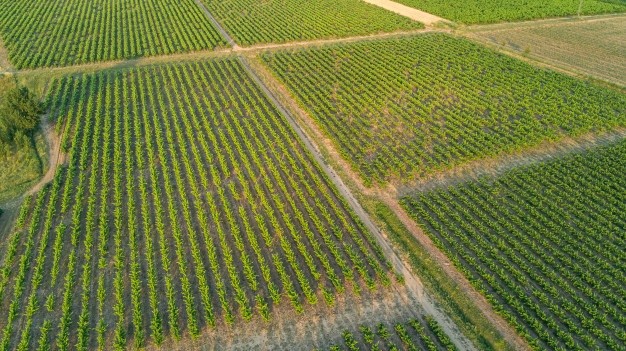The role of vineyard density in wine production
How vine spacing plays a pivotal role in determining wine quality

In recent times, the increasing global interest in winemaking and appreciation has led many to venture into vineyards to experience the source of their beloved vintages. Upon close observation, one can draw fascinating insights about the prospective quality of wines derived from these farms.
The Nuances of Plantation Density
Plantation density is defined by the number of vines planted per unit of vineyard surface, typically measured as vines per hectare. It plays a pivotal role in determining how the root system, or the radicular system of the vineyard, explores the soil. The density, in turn, influences several vegetative functions of the plant, culminating in the quality of the fruit it bears.

By adjusting the number of vines per hectare in alignment with the cultivation environment's capabilities, one can achieve high-quality harvests and wines. This is achieved by establishing a balance between the vineyard and its surrounding environment.
Quality Augmentation with Increased Density
An intriguing observation suggests that higher plantation densities lead to better wine quality. When vine densities are elevated, the overall root density for the vineyard's total surface also surges due to the sheer number of vines. However, this creates greater competition among plants. As a consequence, individual vine vigor diminishes, decreasing production. On the brighter side, the grape quality tends to enhance, resulting in smaller clusters with smaller grapes. These smaller grapes have a larger skin-to-volume ratio, translating into wines with a richer aroma, greater extract, and ultimately, superior quality.
Yet, it's worth noting that merely increasing plantation density doesn't always guarantee an improvement in quality. At times, the balance is not adequately achieved, leading to large harvests but with grapes of compromised quality.
Significance of Regularly Spaced Vines

Plantation layouts with uniform spacing, both between rows and within rows, yield better wines. Such configurations allow for improved root system distribution, with vines better exploring the soil. This optimization increases the proportion of "absorptive roots" in relation to the "conductive non-absorptive roots."
Environmental Conditions as Determinants of Quality
Plantation density isn't solely a product of human choice. It's governed by several factors such as available sunlight, soil fertility, and water availability. Rainfall is a limiting factor in viticulture. While vineyards can thrive with slightly less than 300 mm of annual rainfall, plantation densities in wine regions can range from 1,500 vines per hectare in drier areas to over 5,000 in wetter regions.
Additionally, the design of the vineyard lines, rooted in plantation density, takes various forms, from real framework, staggered, rectangular frame, to level lines. The choice largely hinges on the specific vineyard's cultivation conditions and the mechanization requirement. High plantation densities might impede the movement of machinery due to the space occupied by vines. Greater densities can also pose other challenges such as reduced sunlight absorption due to excessive shading between leaves, and increased susceptibility to fungal diseases due to poor ventilation and humidity buildup.
Finally, a vineyard's financial capability also impacts plantation density and subsequently, wine quality. Tripling the plantation density can escalate costs by 60% to 70%. From an economic viewpoint, each vineyard row can be seen as a "basic cost unit." The cost of plantation and exploitation rises more when increasing the number of rows than by merely altering the distance between vines in a row.
Given favorable land and cultivation conditions, adequate rainfall, sunlight, and manageable production costs, vineyards with high plantation densities and uniformly spaced rows and lines emerge as frontrunners in producing top-tier wines.
Founded in 2007, Vinetur® is a registered trademark of VGSC S.L. with a long history in the wine industry.
VGSC, S.L. with VAT number B70255591 is a spanish company legally registered in the Commercial Register of the city of Santiago de Compostela, with registration number: Bulletin 181, Reference 356049 in Volume 13, Page 107, Section 6, Sheet 45028, Entry 2.
Email: [email protected]
Headquarters and offices located in Vilagarcia de Arousa, Spain.